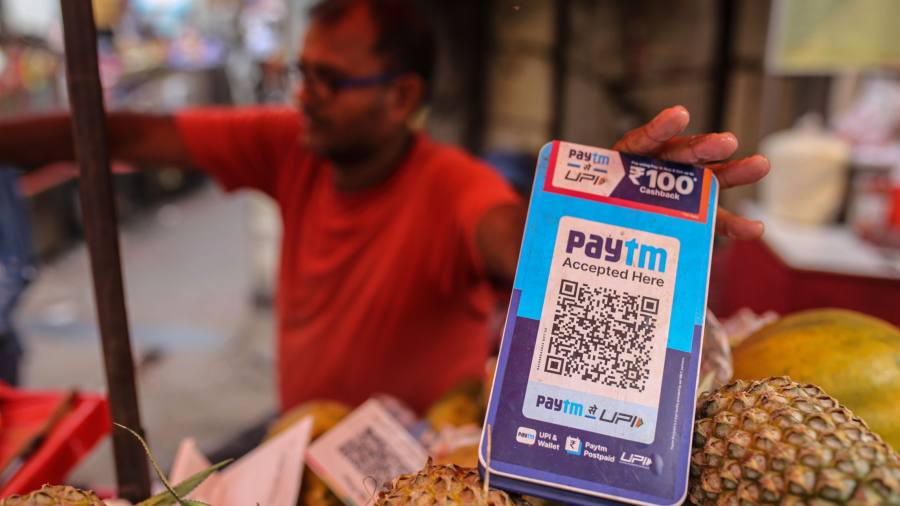Receive free Indian economy updates
We’ll send you a myFT Daily Digest email rounding up the latest Indian economy news every morning.
India is to roll out ways of making voice-based and offline digital payments to expand the country’s fast-growing digital infrastructure and close a yawning divide between rural and urban areas.
The growth of the Universal Payments Interface, a digital payments system, is an important part of Prime Minister Narendra Modi’s ambitions to build out India’s digital infrastructure and bring the world’s most populous country online.
Since UPI was launched in 2016, digital transactions have taken off: about 350mn people now use UPI to pay for goods and services or to transfer money instantly. The system recorded almost 10bn transactions in July, more than 50 per cent higher than the same month last year.
But its penetration into India’s poorer rural areas has been hampered by sparse internet access and lower levels of literacy outside urban areas.
To address this gap, the Reserve Bank of India this month announced a plan for “conversational” payments. UPI users will be able to make verbal transfer instructions on their phones which will be processed using AI-based speech recognition to initiate transactions.
The service, which will use open-source AI language tools developed by the Indian Institute of Technology Madras, will initially be available in English and Hindi before being broadened to other languages.
Users will also be able to make transactions without the internet by using “near field communication” technology, a system widespread in contactless card transactions, that uses a connection between two close-by phones. This will “enable retail digital payments in situations where internet [or] telecom connectivity is weak or not available”, the RBI said.
Dilip Asbe, head of the National Payments Corporation of India, the state-backed entity which manages UPI, said the measures — which will be introduced in the coming months — will facilitate digital payments outside India’s largest cities, where growth has been concentrated.
“What they do is help us to expand and create a new use case to reach out to more users and more merchants,” he told the Financial Times.
Modi’s government has promoted cashless payments as part of a digital infrastructure suite, known as the India Stack, designed to bring the country’s vast and unregulated cash-based economy into the formal financial system.
The UPI system has also been central to Modi’s pitch to attract foreign investment, with companies including Google and Walmart-owned PhonePe building popular payment apps. Countries such as Singapore and the United Arab Emirates have also integrated elements of India’s payments infrastructure with their own.
Vijay Shekhar Sharma, founder of Indian payments group Paytm, said the offline function for UPI could be a “game changer”.
The plan faces considerable headwinds, however. Analysts warn that access to digital tools remains starkly unequal. Less than half of Indians use the internet, according to the IMF, while just 15 per cent of rural households have internet access. India is also home to the world’s largest population of illiterate adults, at about 300mn people.
Asbe acknowledged that bridging the digital divide would be a challenge. “But it can create value in the long run,” he said.
Civil society advocates have also cautioned that the growth of India’s digital infrastructure has outpaced protections on user data, leading to a series of high-profile breaches. New Delhi last week passed a landmark personal data security bill, though critics said its privacy protections did not go far enough.
Jayanth Kolla, co-founder of tech consultancy Convergence Catalyst, cautioned that making the voice function work at scale would be difficult given India’s dozens of languages.
“For the system to recognise that and work across the length and breadth of the country could be an issue,” he said.
Read the full article here



